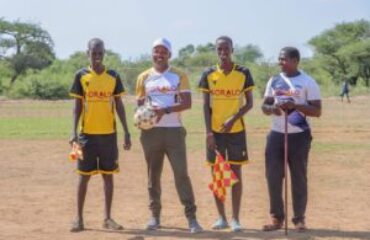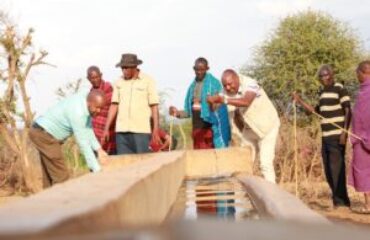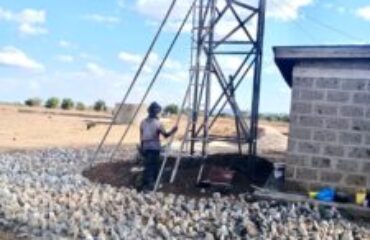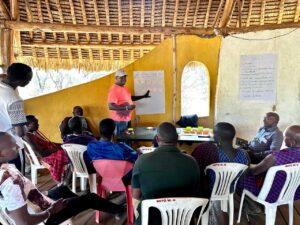
The term “coexistence” is used a lot when referring to people and wildlife, but what does successful coexistence with lions – and other animals – really look like and entail? And who gets to define it? People living in the South Rift share their lives with wildlife every day – and have done so for centuries. They hold generations of experience and knowledge in what it is like to live alongside lions, or factor wildlife into daily decision-making, or share and manage resources with numerous animals in their ecosystem. Indeed, as one South Rift community member puts it, “the Maasai and wildlife have always had a good relationship of coexistence, it is not a new concept”. In trying to understand what coexistence means, therefore, these seem like the right people to ask.
SORALO’s Community First approach is founded on this recognition, that our communities – as the traditional stewards of the South Rift landscape and dependents on what it provides – hold valuable knowledge in, and are at the forefront of, caring for and coexisting with their landscape and all that lives upon it. Therefore, this past August, we brought together 38 of our community members for a workshop at the Lale’enok Resource Centre to explore this question. This group of people – representing the men and women, rangers, government officials, and conservation partners from the surrounding communities – gathered for a day and a half of personal reflection and honest conversation.
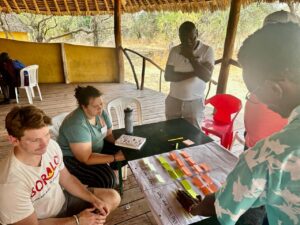
The workshop was born out of our partnership with the Emerging Wildlife Conservation Leaders program (EWCL), which connects conservation leaders worldwide for training and real-world projects. From the start, this collaboration drew on existing research on human-wildlife coexistence while recognizing that it cannot replace the knowledge of the communities who live and drive coexistence and conservation on the ground.
Too often, organizations fall into the trap of measuring conservation success by what is easiest to count rather than what matters most to communities. This workshop aimed to allow people living with lions to define what successful coexistence with lions means to them. However, not all went according to plan.
As is often the case, our community members were able to quickly highlight to us where our teams’ academic research and focus was perhaps a little misplaced or disconnected from the reality on the ground. We soon discovered that the animal we had come to talk about – lions – was not the biggest issue defining human-wildlife coexistence on the landscape. Instead, our community members pointed out, elephants were what we urgently needed to discuss.
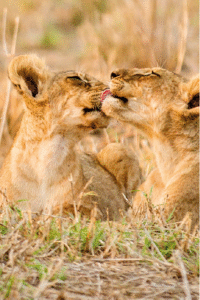 In response, we adapted our discussions and collaborative exercises, and workshop participants were able to identify a wider variety of the elements that more genuinely reflect and characterise the full picture of coexistence in the South Rift landscape. This included livestock loss and financial support to communities, fair distribution of conservation-related benefits within the community, awareness of safe coexistence practices, effective communication between institutions and communities, and the timeliness of responses to wildlife conflicts.
In response, we adapted our discussions and collaborative exercises, and workshop participants were able to identify a wider variety of the elements that more genuinely reflect and characterise the full picture of coexistence in the South Rift landscape. This included livestock loss and financial support to communities, fair distribution of conservation-related benefits within the community, awareness of safe coexistence practices, effective communication between institutions and communities, and the timeliness of responses to wildlife conflicts.

Through the workshop, our community members were able to share valuable insights, which we are now working on integrating with approaches from other coexistence research. The goal is to develop an indicator framework that combines what South Rift communities find meaningful and useful with what conservation practitioners can systematically measure over time. Simply put, this will enable us to collect data on the aspects of coexistence that are most important to our communities, and therefore better inform and support our communities’ vision for coexistence in the future.
As SORALO team member Moses Tenke reflected after the workshop: “We really have some good metrics from the workshop. The metrics created will align with our work. Connecting ideas from the community and partners together was important, and now we can work together to make this all a success.”
To further support this work, the EWCL and SORALO teams are also developing a new internal system of data-driven dashboards that aim to streamline the ways we gather, track, and share data on these community-driven indicators. This initial batch of dashboards will help us assess our progress internally. However, they are also paving the way for us to develop a similar set of data display tools that can be shared outwardly with community members.
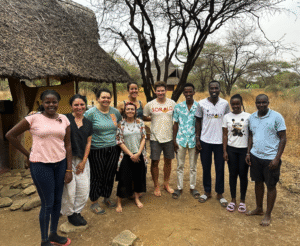
Workshop facilitating team
One participant at the workshop highlighted this responsibility: “We have come from different locations…now we are going to take good messages home. We are going to provide feedback to the communities. We are not being trained to keep the information but to share it with the communities. We are going to take the message home.”
By sharing what we learn from our data – in particular any findings based on those elements prioritised by our communities – we will help ensure that this information is impactful. With access to accurate and relevant data, delivered in a useful and meaningful way, our community members will be able to make more informed decisions based on what matters most to them.
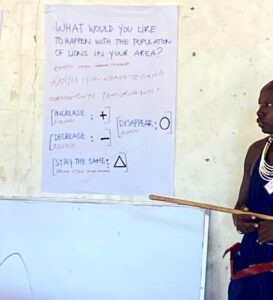
In line with this, SORALO’s Community First approach aims to create an environment in which our communities are supported and enabled to make and implement their own well-informed decisions, which allow them to take ownership over their land and resources and themselves determine how they should thrive. This workshop embodied this philosophy, and we will continue engaging in meaningful conversations with community members as we work toward a shared future shaped by our communities, where people and wildlife coexist in the South Rift.
Thank you to the Cincinnati Zoo & Botanical Gardens, SeaWorld Busch Gardens Conservation Fund, the Houston Zoo, and a private family foundation for supporting this project. Their generous support made this work possible.
To learn more about this work write to us on: comms@soralo.org

